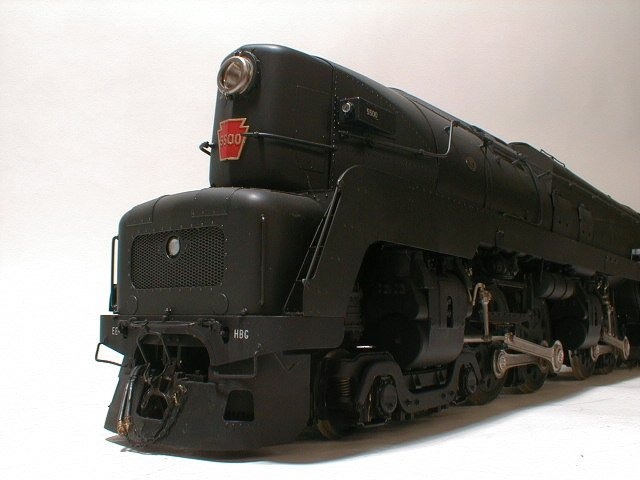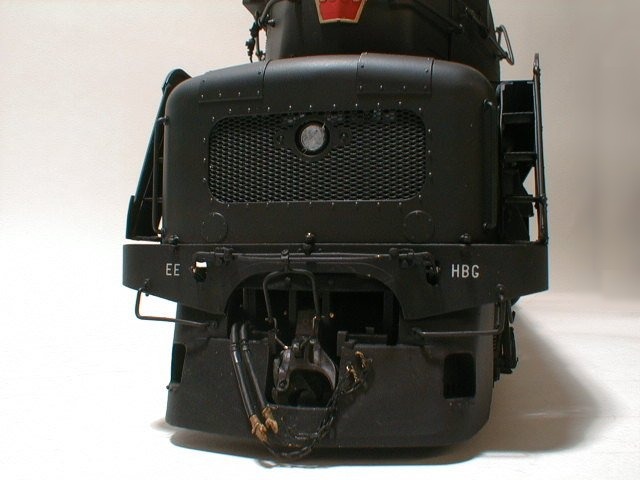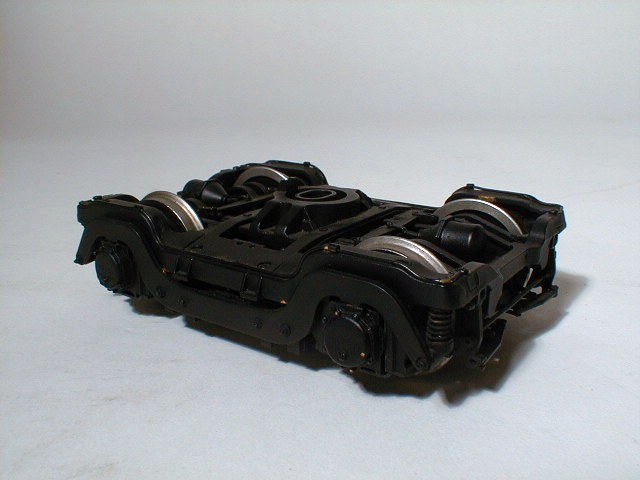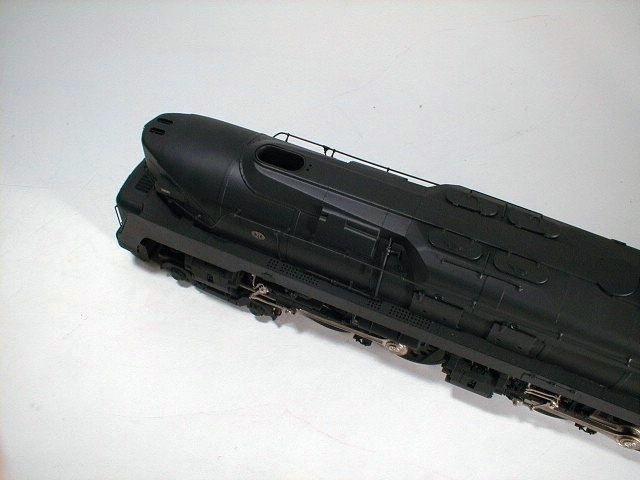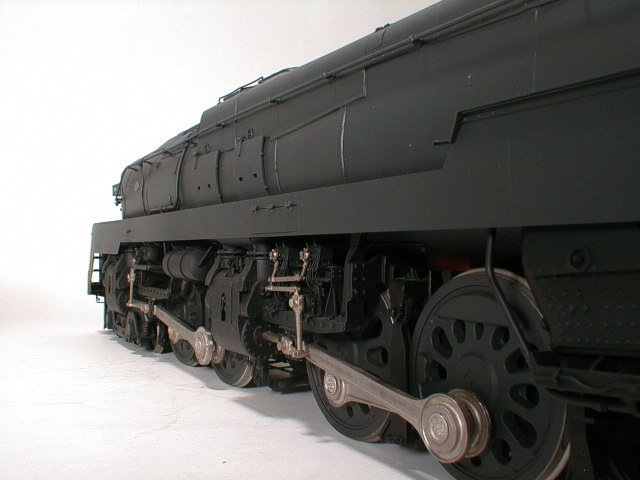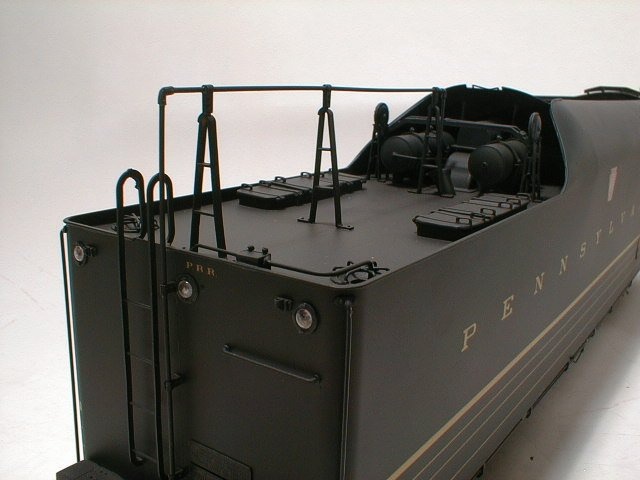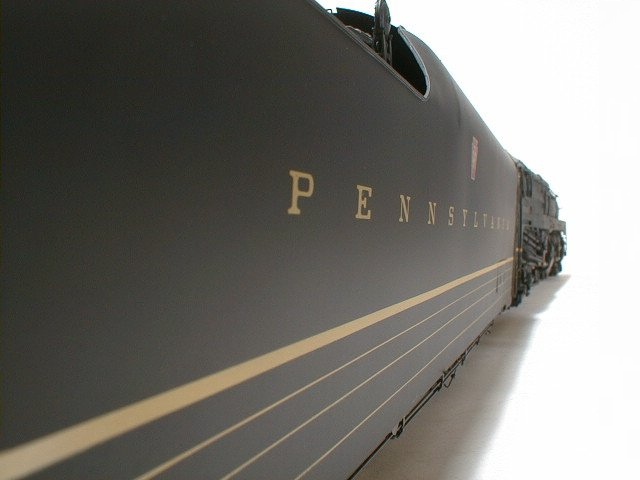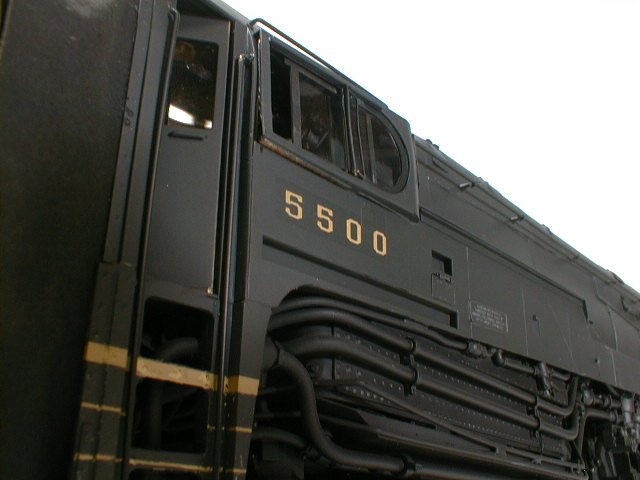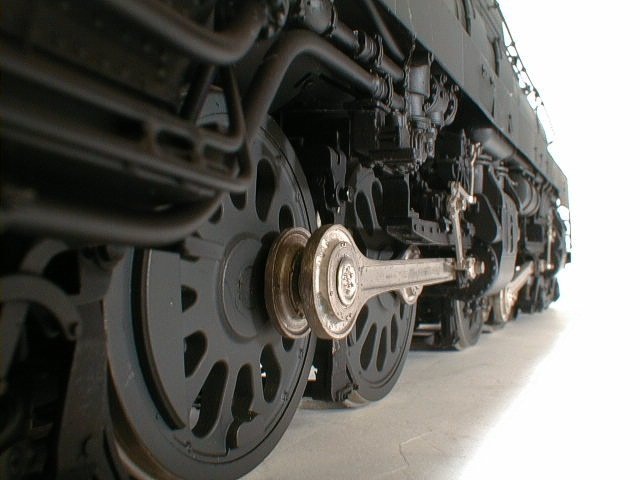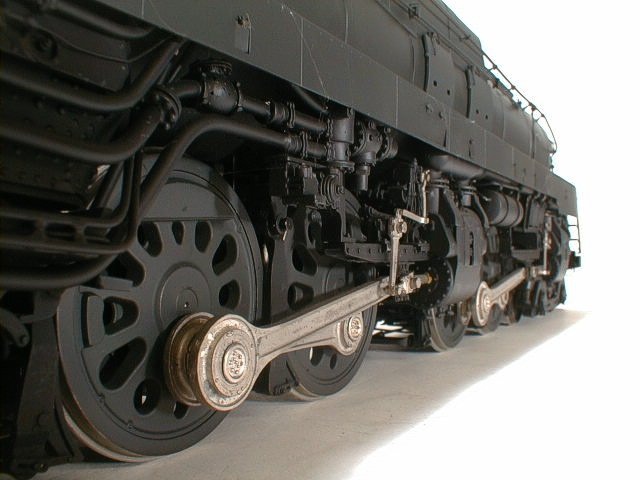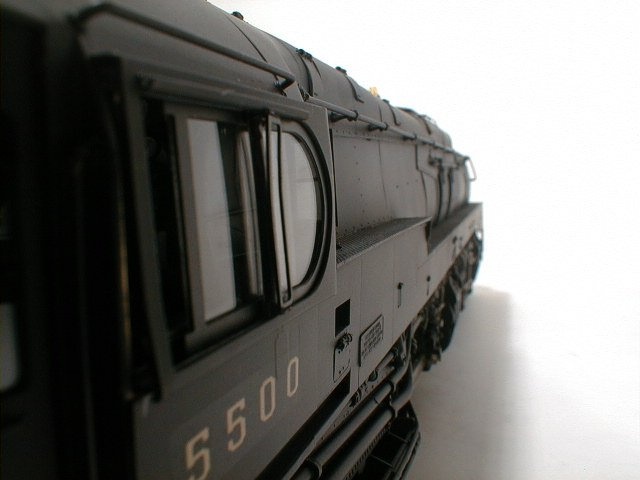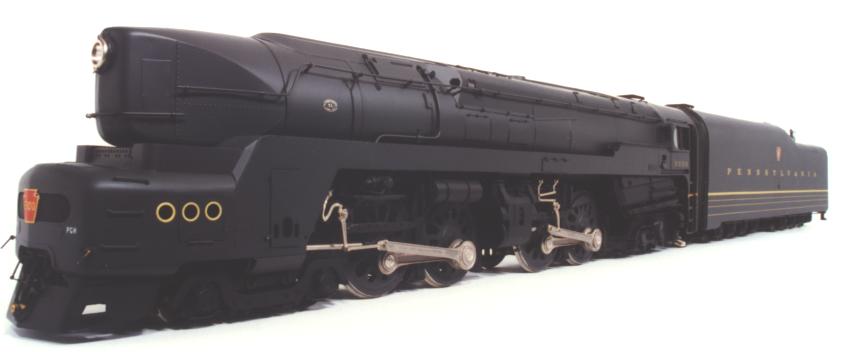T1
Pennsylvania Railroad T1 4-4-4-4 – As Modified
- Scale: 1:32
- Release: 1993
- Limited Edition: 50
- Model Size: 47”L x 4”W x 6”H
- Base Type: Mahogany
- Base/Case Size: 51”L x 8”W x 9”H
- Availability: Sold Out
Pennsylvania Railroad T1 4-4-4-4 – As Built
- Scale: 1:32
- Release: 1993
- Limited Edition: 50
- Model Size: 47”L x 4”W x 6”H
- Base Type: Mahogany
- Base/Case Size: 51”L x 8”W x 9”H
- Availability: Sold Out
Pennsylvania Railroad T1 4-4-4-4
The Pennsylvania Railroad’s T1 4-4-4-4 with duplex drive—four high-pressure cylinders driving four axles on a single rigid frame, in an attempt to improve on the 4-8-4, the premiere steam design for passenger service. The idea was to divide individual piston thrust, thus reducing reciprocating weight and the resulting stresses on crankpins by forty percent. Together with its sister Q2 4-4-6-4 for freight service, the T1 was the Pennsy’s last new steam design before the diesel took over.
In 1937, the Pennsylvania decided it needed a new passenger locomotive to replace its venerable K4 4-6-2s, designed way back in 1914. It started by departing from its tradition of standardized, proven designs with a spectacular 6-4-4-6, the largest rigid frame passenger locomotive ever built. It hoped this S1 could haul 1,000 tons at an ambitious 100 miles per hour, but it’s length limited its use and its axle loading was undesirably high. So in July 1940, the Pennsy ordered two revised locomotives, Nos. 6110 and 6111 the first T1s. With poppet valves, light-weight motion, roller bearings, disk wheels and styling by Raymond Loewy, they were modern in every respect. On test in 1944, No. 6110 produced an impressive 6,110 drawbar horsepower and 6,552 indicated horsepower at 85 miles per hour (Q2 No. 6175 developed 7,987 indicated horsepower at 57 miles per hour in test plant operation, the highest figure ever recorded for any steam locomotive).
The two locomotives ran between Harrisburg and Chicago, 713 miles, and although they spent much time in the shop, the Pennsylvania ordered fifty more locomotives without waiting for their teething problems to be resolved. Nos. 5500–5549 arrived in 1945–46, with the first twenty-five coming from the Pennsy’s own shops at Altoona, Pennsylvania, and the remainder from the Baldwin Locomotive Works.
The T1s were magnificent when they ran and, with their 80-inch drive wheels, they could run as fast as the engineer’s nerves permitted. They rode smoothly and could average over 100 miles per hour with a train of 1,000 tons, although they could slip violently at high speeds. They might have pointed the way toward future developments in high-speed, long-distance passenger service—there exists a sketch of a similar design for rival New York Central—but their complexity worked against them. They never supplanted the simpler, more reliable K4s before diesels intervened. As early as 1949, most T1s were out of service. None were preserved.
Fine Art Models
Fine Art Models built each of the fifty T1s in the 5500 series both “As-Built” (with complete skirting) and “As Retired” (with some skirting removed for maintenance, revealing more detail). Both make excellent power for our 1938 Broadway Limited passenger car sets.
The models are made entirely of brass, nickel silver, and stainless steel, and come with a 1/32nd scale lithograph. Select features of these models include dual, prototypically correct sound systems; dual smoke systems; dual 19-volt Pittman motors with flywheels powering each gear-driven set of drive wheels; an electrified roller display base for running the locomotive in place; real glass windows; complete backhead detail with opening firebox door; prototypically working lights; operating drop coupler; equalized suspension and sprung trucks; ball bearing gearboxes and journals; and complete internal smoke box detail.
